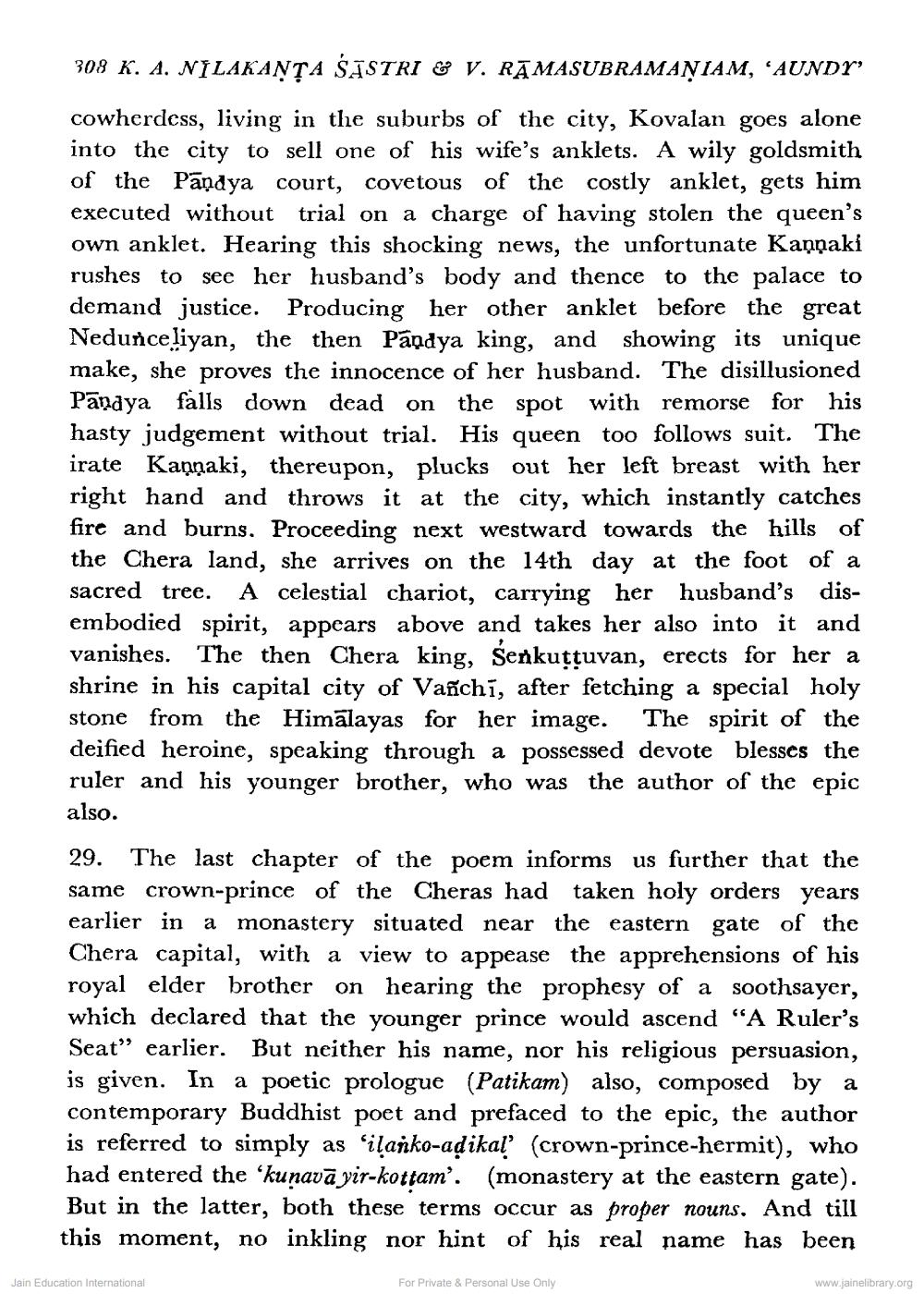________________
308 K. A. NILAKANȚA ŚĀSTRI & V. RĀMASUBRAMAŅIAM, `AUNDY
cowherdess, living in the suburbs of the city, Kovalan goes alone into the city to sell one of his wife's anklets. A wily goldsmith of the Pandya court, covetous of the costly anklet, gets him executed without trial on a charge of having stolen the queen's own anklet. Hearing this shocking news, the unfortunate Kaņpaki rushes to see her husband's body and thence to the palace to demand justice. Producing her other anklet before the great Nedunceliyan, the then Pagdya king, and showing its unique make, she proves the innocence of her husband. The disillusioned Pandya falls down dead on the spot with remorse for his hasty judgement without trial. His queen too follows suit. The irate Kaņñaki, thereupon, plucks out her left breast with her right hand and throws it at the city, which instantly catches fire and burns. Proceeding next westward towards the hills of the Chera land, she arrives on the 14th day at the foot of a sacred tree. A celestial chariot, carrying her husband's disembodied spirit, appears above and takes her also into it and vanishes. The then Chera king, Senkuttuvan, erects for her a shrine in his capital city of Vañchī, after fetching a special holy stone from the Himālayas for her image. The spirit of the deified heroine, speaking through a possessed devote blesses the ruler and his younger brother, who was the author of the epic also. 29. The last chapter of the poem informs us further that the same crown-prince of the Cheras had taken holy orders years earlier in a monastery situated near the eastern gate of the Chera capital, with a view to appease the apprehensions of his royal elder brother on hearing the prophesy of a soothsayer, which declared that the younger prince would ascend "A Ruler's Seat” earlier. But neither his name, nor his religious persuasion, is given. In a poetic prologue (Patikam) also, composed by a contemporary Buddhist poet and prefaced to the epic, the author is referred to simply as 'ilanko-adikaľ (crown-prince-hermit), who had entered the ‘kunavā yir-kottam'. (monastery at the eastern gate). But in the latter, both these terms occur as proper nouns. And till this moment, no inkling nor hint of his real name has been
Jain Education International
For Private & Personal Use Only
www.jainelibrary.org




